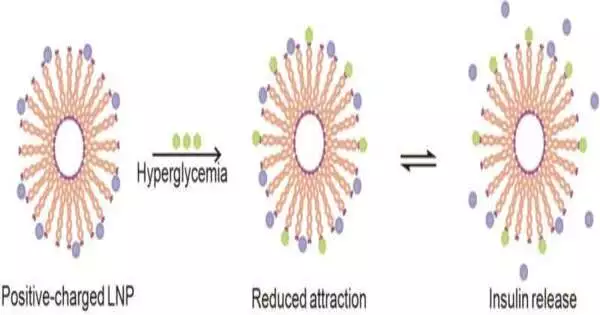People with type 1 diabetes are at constant risk of hyperglycemia or hypoglycemia. Carefully controlled insulin release helps improve blood sugar control. As reported in the journal Angewandte Chemie, the research team proposed a new formulation of glucose-linked insulin, a lipid nanoparticle carrier that releases more or less insulin depending on blood glucose levels.
Plasma insulin levels are primarily regulated by pancreatic cells and reflect fluctuations in blood glucose levels. People with type 1 diabetes make little or no insulin and need several injections of short-acting insulin and one or two injections of long-acting insulin daily to maintain normal blood sugar levels.
Or wear an insulin pump that provides continuous infusion. Insulin medications cannot respond to changes in blood sugar levels and therefore do not allow accurate blood sugar control. Taking too much insulin, skipping meals, or eating too few carbohydrates before intense physical activity increases the risk of acute, life-threatening hypoglycemia. Insulin drugs that respond to glucose and mimic -cell function may improve insulin therapy. There are two problems with some approaches that use insulin “carriers” made of polymers with integrated glucose oxidase as a glucose detector. The polymeric carrier does not have a uniform molecular weight, and glucose oxidase is toxic when released into the body.
A Chinese team led by Jingqian Wang and Zheng Gu from Zhejiang University, Zhejiang Cancer Hospital, and the University of Hong Kong took a different approach based on biocompatible lipid nanoparticles used as lipid carriers with uniform chemical structures. Lipid nanoparticles are already widely used as drug carriers in clinical practice. Some of the lipids are modified so that the surface of the self-aggregated nanoparticles has many positive charges. The negatively charged insulin molecules bind electrostatically to the nanoparticles and are slowly released when blood glucose levels are normal. When blood glucose levels are high, some lipids in the nanoparticles form chemical bonds with glucose, reducing the positive surface charge and greatly accelerating insulin release.
Diabetic rats treated with the new insulin formulation were able to maintain normal blood sugar levels for 6 hours. After the injection of glucose, the blood sugar levels in the treated diabetic rats fell to normal levels as quickly as in the healthy rats.
In the future, the combination of this glucose-responsive insulin preparation with a dosing device controlled by a portable electronic glucose detector could significantly improve glycemic control in diabetic patients.
More information: Yun Liu et al, Glucose‐Responsive Charge‐Switchable Lipid Nanoparticles for Insulin Delivery, Angewandte Chemie International Edition (2023). DOI: 10.1002/anie.202303097





